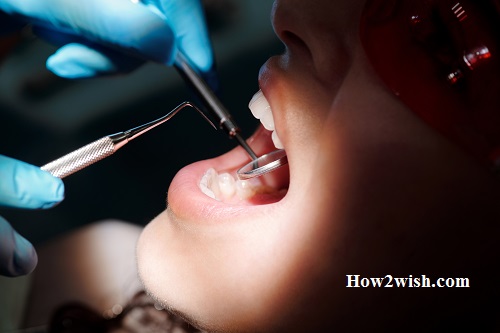Sooner or later, every adult asks himself whether it is necessary to remove the upper and lower wisdom teeth, and why some people go for this procedure simply at will, if there are no visible problems. Extraction of eights is common in dentistry and is performed quite often. However, it is worth resorting to it according to indications, and not just because you wanted to. The operation is associated with many potential and real difficulties, so before getting rid of a dental unit, it is important to consult a doctor and undergo a comprehensive examination.

Why are third molars needed?
The last elements of the series went to modern man from distant ancestors. Currently, they are recognized as rudimentary organs, that is, they have lost their purpose in the process of evolution. In ancient times, people ate a little differently. They needed to chew tough, raw meat, which meant they needed massive jaws. When food began to be subjected to heat treatment, the need for chewing rough food disappeared, so gradually the eights ceased to be an obligatory component of the dentition.
The jaws themselves have narrowed, so there is less room for wisdom teeth. It is for this reason that they often grow with deviations from the norm (at an angle, horizontally, deform the root system of neighbouring units, etc.). Treatment of curved canals is extremely difficult, like other dental procedures. Given this, specialists are increasingly deciding on extraction.
Despite all of the above, third molars can be useful because they:
- hold neighboring elements, do not allow them to loosen and move;
- act as a support for bridges during the restoration of dentition;
- perform the functions of sevens, if for some reason they are removed;
- fix the jaws, as they are located in their corners.
Thus, extraction should be performed only when indicated. If the patient does not have any discomfort and there are no other pathological symptoms, it is better to refuse the procedure.
When the eights rise
The rudiments of all dental units are laid down in a person during the period of intrauterine development. At the same time, wisdom teeth are an exception, this process begins only by 3 or 5 years or later. At this age, with the help of computed tomography, it is already possible to determine how many of these will erupt later. However, it is impossible to predict in advance the presence of any problems in the future.
The last elements of dentition begin to grow from about the age of 12, erupting from 18-25 years and much later. However, this period is very arbitrary, it all depends on the individual characteristics of a particular patient. According to statistics, for a fifth of the entire population of the planet, eights never appear, for the rest, they are formed partially or in full, although they may not erupt.
Possible problems
Before you understand whether it is necessary to remove wisdom teeth when it is required, you should familiarize yourself with the existing deviations from the norm. All units should grow vertically and be arranged in rows evenly, without causing any discomfort. However, with third molars, things may not be the same. They develop when the skeletal system is already completing its formation, and the jaws no longer grow, which means that theoretically there may simply not be enough space for additional elements. There are potential problems associated with this, the most common of which are:
- Pain during growth. This may be due to the thickening of the mucous membranes of the gums at the site of eruption, and lack of space. Figure eight moves neighbouring units in a row, which provokes an inflammatory process and pain. Unpleasant sensations are given to the neck, throat, and lymph nodes, and migraine, and fever is possible.
- Partial cutting. The tooth may not come to the surface and be in the gum or crawl out partially.
- Gingival hood. This is a growth from the mucous membranes, which is formed when the element grows too slowly. Such a problem leads to the accumulation of food particles, putrefactive processes, inflammation, suppuration, and other complications, such as pericoronitis. It is characterized by severe pain, swelling of the gums, and an unpleasant taste and smell from the oral cavity.
- Dystopia. This term means the wrong arrangement of units in a row. They can grow crookedly and protrude relative to other molars. This leads to injury, and inflammation of the soft tissues of the gums, cheeks, and tongue. Wounds and erosive areas appear.
- carious lesions. They spread very quickly due to difficult access to eights and, as a result, poor-quality care.
- Cyst. Sometimes it forms in the soft tissues that surround the unit. It must be removed promptly.
- Bite anomalies. Observed due to displacement of erupted rows.
- Periodontitis. The inflammatory process occurs due to the accumulation of pathogenic microorganisms and insufficient oral hygiene.

The Complete Guide to Orthodontic Procedures
Indications for extraction
When deciding whether to remove a wisdom tooth or treat it, the doctor must conduct a thorough examination and, if necessary, refer the patient for additional diagnostic studies. It is necessary to get rid of third molars only when indicated. First of all, such a radical technique is used when a unit is a source of infection or interferes with the functionality of neighboring elements.
In what situations can you do without extraction:
- Extensive carious lesion. Eights are quite fragile by nature because they practically do not participate in chewing and do not experience the corresponding loads. At the same time, curved canals are quite difficult to treat. Caries often go into deeper layers, which in any case will lead to surgery.
- Severe destruction of the coronal part. Installing artificial ones is impractical because it is short-lived.
- The absence of an opposite unit. This does not lead to an increase in the load, however, the tissues gradually atrophy and are destroyed.
- Dystopia. Extraction is indispensable when the figure eights injure the gums and the inside of the cheeks, displace neighbouring elements and their roots, negatively affect the bite, and cause pain or other discomforts.
If you ignore the symptoms listed above, serious complications can occur. For example, cystic formations, abscesses, and inflammation of bone tissue.
Contraindications
There is a list of grounds in the presence of which surgical intervention is not performed. It cannot be used for:
- pregnancy, breastfeeding (it is advisable to postpone the procedure for a while);
- diseases of the heart and blood vessels in the stage of decompensation;
- allergies to the components of local anesthetics (in extreme cases, general anesthesia is acceptable);
- severe manifestation of arterial hypertension (hypertensive crisis);
- the absence of other elements in the row (figure eight can subsequently become a support for the bridge).
The decision to operate should be made by the dentist. He can compare the potential benefits and possible risks, as well as correctly assess the patient’s condition.
Features of wisdom teeth removal
The third molars are not involved in chewing and other functions characteristic of other units, therefore, in principle, they are not recognized as particularly useful. However, they can cause many problems. Plaque accumulates on them, which hardens and turns into stone, and bacteria multiply, leading to caries and other dental disorders. They are difficult to clean daily. In addition, they can cause pain during the eruption. As a result, patients prefer to go to the doctor with a request to remove elements of the series that do not bring any benefit but only complicate life.
All of these points are the main reasons why dentists recommend removing wisdom teeth, but this issue must be considered individually. If the decision to extract is nevertheless made, the specialist performs this most complicated procedure in the absence of contraindications. Standard procedure:
- performing a deep incision of the gum tissue;
- separation of the dental unit from the mucous membranes using a sharp scalpel;
- drilling a partition between the roots;
- fixation of dental forceps on the crown;
- loosening of the third molar and its extraction from the bow;
- suturing.
All manipulations are performed under local anaesthesia, so the person does not feel pain. In this case, the procedure is associated with increased trauma. Subsequently, an inflammatory process develops, which, in the absence of timely therapy, can provoke serious complications, for example, sepsis. After surgery, the body temperature rises, soreness is felt, swelling is observed, and other consequences are possible. It is for this reason that everything should be done only when indicated, and not simply at the request of the patient.
How to prepare for the procedure
When at the initial appointment and discussion with the doctor whether the removal of a wisdom tooth is necessary, why it is indicated in a particular case, a decision is made to operate, certain actions must be performed before this happens. First, you need to eat well. Dentists categorically do not recommend coming to extraction with an empty stomach. In addition, eating will be prohibited for several hours after all manipulations, and this is quite a long time.

Also follows:
- thoroughly brush your teeth with a brush and paste;
- stop smoking and drinking alcohol on the appointed day;
- warn the specialist about allergic reactions, the presence of chronic diseases, taking medications
What to do after extraction
A hole and a deep wound remain in the vacated area, requiring high-quality care. As a rule, to prevent suppuration and inflammatory processes, dentists advise rinsing your mouth and making disinfecting baths.
Doctors give specific recommendations after the procedure. Sometimes it is required to take painkillers, anti-inflammatory, and antipyretic (with an increase in body temperature) agents. However, do not be afraid of difficulties, a positive attitude is extremely important in this matter. The main thing is to contact a clinic with qualified experienced specialists, such as Dentika.
Possible Complications
Why is it worth a million times to think about whether it is necessary to remove wisdom teeth in the absence of indications, just like that? After extraction, severe swelling and swelling appear in the gums and cheeks, the face becomes numb, bleeding from the hole is observed, ichor is released and quite severe pain is felt. All of these symptoms are considered normal. They are not dangerous and disappear within a few days after medical manipulations. In general, rehabilitation lasts 1-2 weeks.
More serious problems arise if the surgeon made a mistake, or the patient himself neglected to follow the recommendations during the recovery period. A common complication is an osteomyelitis. With its development, hard and soft tissues of the oral cavity are affected, they fester and become inflamed. The disease appears due to the ingress of pathogens into the hole. If you do not contact the dentist promptly, there is a risk of further spread of infection and sepsis.
Also, abscesses, fluxes, neuritis, etc. often occur. All these pathological processes are accompanied by severe pain and deterioration of the general condition.
Thus, extraction is a complex procedure, planning which, you need to weigh the pros and cons. It is important to have strict indications. If it is possible to leave the molar, it is better to choose this option.
When to Save the 8
Is it always necessary to remove a wisdom tooth, or is it possible not to do this? Doctors do not violate the integrity of the series if there are no serious reasons for this, and less radical methods have not shown the desired result. In what cases it is necessary to postpone the operation:
- there is no discomfort during the eruption, all elements are located correctly and grow without anomalies;
- the molar does not interfere with neighbours and does not move them;
- there are no obstacles to the installation of various dental structures;
- cut through all the problem-free antagonists;
- possible high-quality treatment;
- soft tissues are not injured.
It turns out that if figure eight has cut through, has a normal shape, is correctly located, does not injure the mucous membranes, does not affect the bite, or the functioning of the rows, and does not cause any discomfort, it is recommended to leave it. Even in the presence of a carious lesion, molars can be treated. The consequences of extraction and complications are much more difficult to tolerate than non-surgical medical intervention.
Do wisdom teeth heal?
Yes, just like any other element. However, the doctor must consider the situation on an individual basis. This is primarily due to possible difficulties.
The elimination of caries in figure eight is a laborious process that is impractical with severe tissue destruction. With inflammation, it is possible to do without excision of the gingival hood, followed by cleansing of the vacated space.
Pulpitis also does not always require surgical intervention. Of course, the pulpless unit will not last long, but the dentist will strive to leave it.
All doctors agree that it is much easier to treat the upper third molars than the lower ones. In the second case, the so-called conduction anaesthesia is more often used. It is the most efficient and covers a large area.
Summing up
In this article, we examined in detail why wisdom teeth are removed, whether they are always not treated, in what cases it is possible to refuse surgery, and what patients have to face after the procedure. Eights can grow crookedly, injure soft tissues, spoil the bite, and appearance, shift the elements of the row, and cause many problems of varying severity. However, to resort to extraction or not, you need to decide together with the dentist. With a competent approach and the absence of strict indications for surgical intervention, a qualified doctor will be able to cope with the pathological process without removing the unit from the hole.